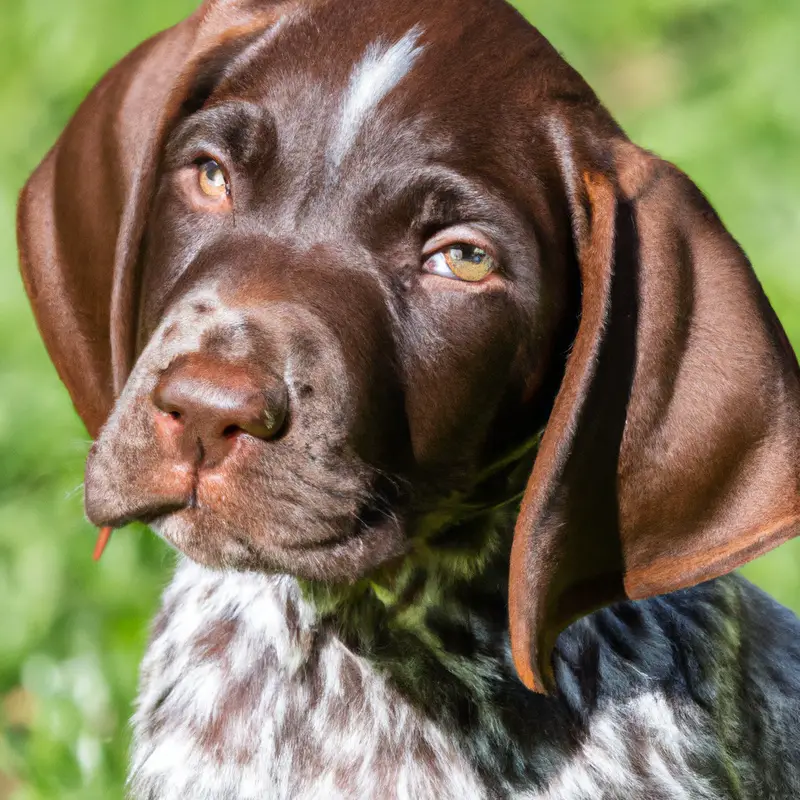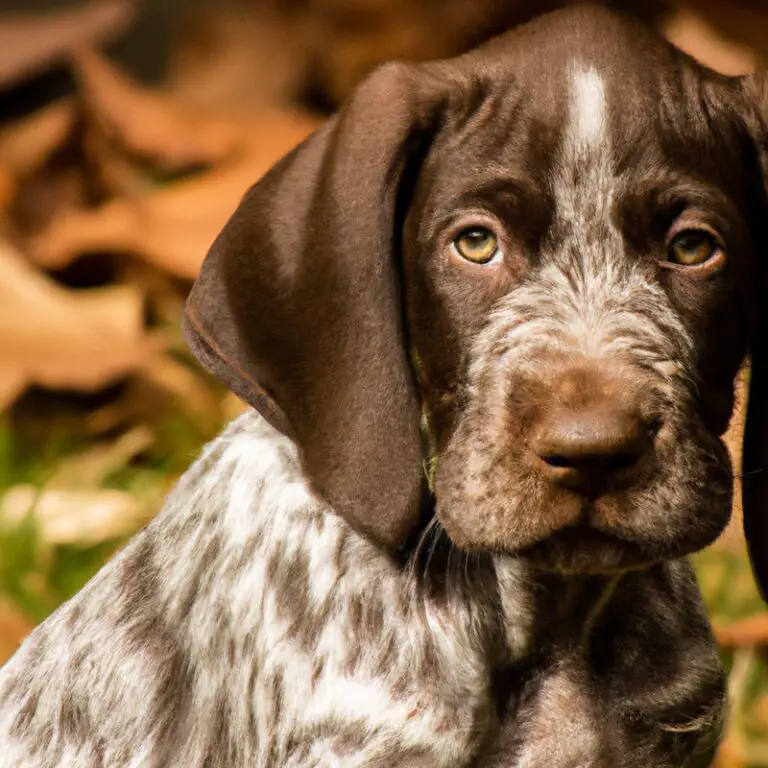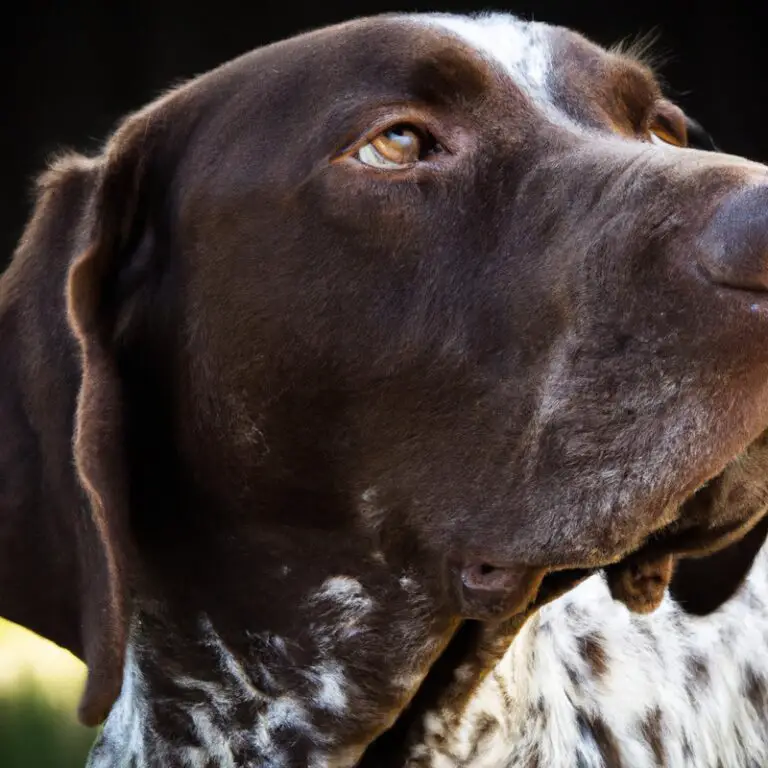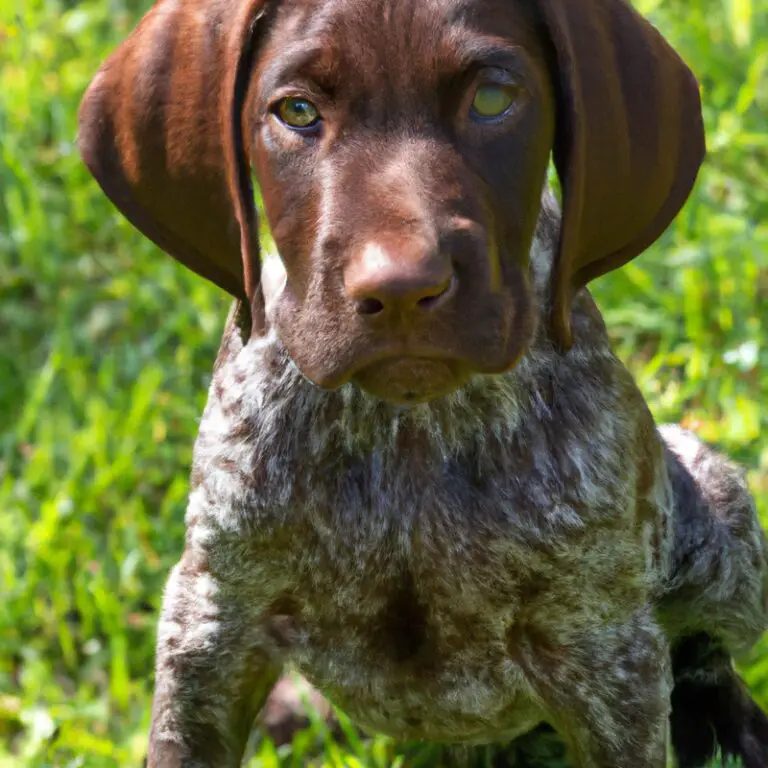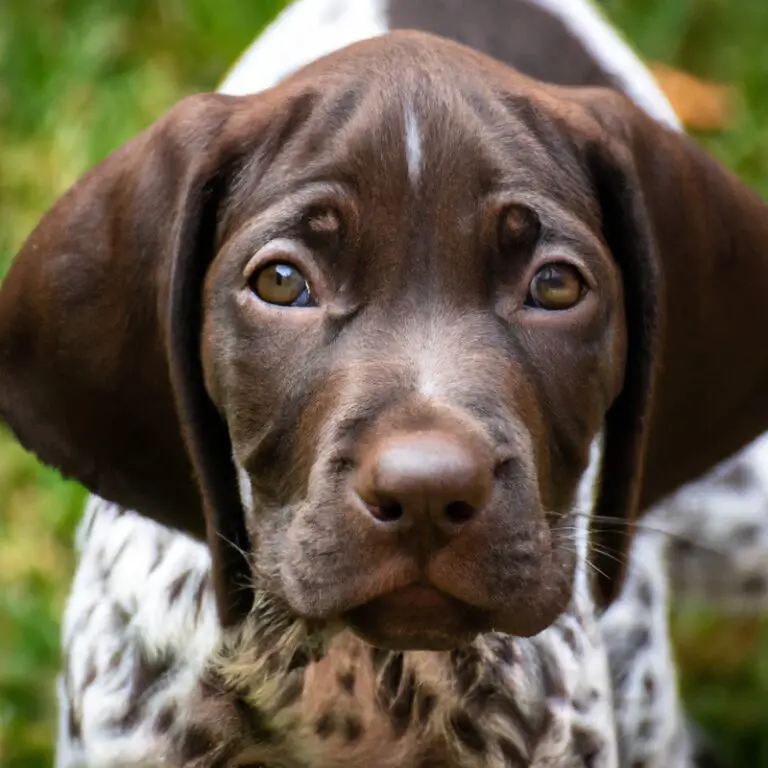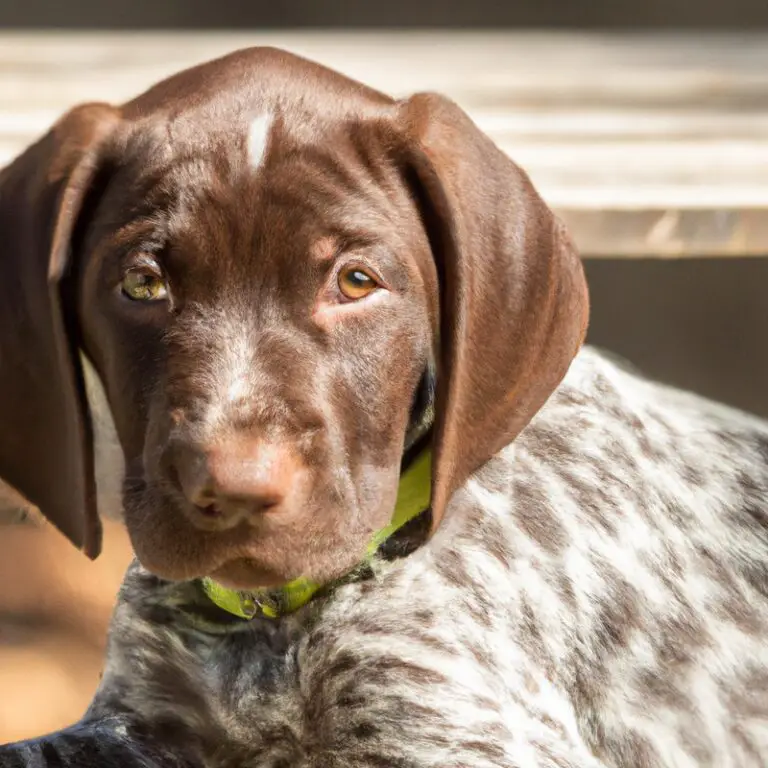Can a German Shorthaired Pointer Be Trained To Be a Dock Diving Dog?
Key Takeaways:
- German Shorthaired Pointers can be trained to excel in dock diving.
- Training a German Shorthaired Pointer for dock diving requires consistent and structured training.
- The natural athleticism and love for water make German Shorthaired Pointers well-suited for dock diving.
- Proper socialization and positive reinforcement are crucial for the success of training a German Shorthaired Pointer for dock diving.
Are you looking for an exciting and challenging sport for your furry friend? Well, look no further! In today’s blog post, we will explore the world of dock diving and specifically, whether German Shorthaired Pointers have what it takes to make a splash in this thrilling dog sport.
As a seasoned dock diving enthusiast and proud owner of a German Shorthaired Pointer, I can assure you that these energetic and athletic dogs are more than capable of excelling in this water-based discipline.
Join me as we discover the characteristics and natural abilities that make German Shorthaired Pointers perfect candidates for dock diving. Get ready to dive in!
| Factors | German Shorthaired Pointer | Dock Diving |
|---|---|---|
| Temperament | Intelligent, trainable, eager to please, and energetic | Excels in sports and activities that involve swimming and jumping |
| Physical Attributes | Strong and athletic build, webbed feet, natural swimming abilities | Requires good physical conditioning and proper technique for jumping and diving |
| Training Considerations | Responds well to positive reinforcement training methods | Needs specialized training to learn dock diving techniques and safety guidelines |
| Opportunities for Success | Many German Shorthaired Pointers have excelled in dock diving competitions | Can participate in various dock diving events at different skill levels |
| Challenges | Individual variations in temperament and physical abilities may influence success | Requires time, effort, and commitment from both the dog and the handler |
German Shorthaired Pointers as Dock Diving Dogs
Characteristics of German Shorthaired Pointers
German Shorthaired Pointers have several distinct characteristics that make them stand out as a breed. First and foremost, they are known for their athleticism and endurance.
These dogs have a lot of energy and love to exercise, so they are great for active individuals or families.
Another characteristic of German Shorthaired Pointers is their intelligence and trainability. They are quick learners and are eager to please their owners, making them relatively easy to train.
This makes them versatile and suitable for a variety of activities, including dock diving.
In addition, German Shorthaired Pointers have a friendly and outgoing nature. They are often described as being affectionate and good with both adults and children.
However, they do require socialization from an early age to ensure they get along well with other animals and strangers.
Lastly, German Shorthaired Pointers have a short and dense coat that is waterproof. This allows them to stay warm and dry even in wet environments, which is particularly beneficial for water-based activities like dock diving.

Natural abilities that make German Shorthaired Pointers suitable for dock diving
German Shorthaired Pointers have several natural abilities that make them well-suited for dock diving. First and foremost, their athletic build and strong muscles allow them to generate powerful leaps and jumps.
This is crucial for achieving greater height and distance during the diving competition.
Additionally, German Shorthaired Pointers have webbed feet, which helps them generate more propulsion and maneuver in the water efficiently. This trait aids in their ability to navigate the water and perform well in dock diving events.
Furthermore, their natural instinct for hunting and retrieving makes them eager and focused on chasing and retrieving toys or objects in the water.
This drive and enthusiasm contribute to their success in dock diving competitions.
Training considerations for German Shorthaired Pointers in dock diving
Training considerations for German Shorthaired Pointers in dock diving:
- Start with basic obedience training: Before getting into dock diving, it’s essential to train your German Shorthaired Pointer in basic obedience commands like sit, stay, and come. This provides a solid foundation for more advanced training.
- Introduce water gradually: While some German Shorthaired Pointers take to water naturally, others may need gradual introduction. Start by allowing them to wade in shallow water and gradually increase the depth as they become comfortable.
- Use positive reinforcement: Positive reinforcement, such as treats and praise, works best when training your German Shorthaired Pointer. Reward them for every successful dive or attempt, encouraging them to continue in the sport.
- Practice jumping and retrieving: Dock diving requires both jumping and retrieving skills. Incorporate exercises that help your dog build strength, agility, and confidence in these areas. Use floating toys or dummies thrown from the dock to simulate diving scenarios.
- Consider professional help: If you’re new to dock diving or struggling with training, consider enlisting the help of a professional trainer or joining a dock diving club. They can offer guidance, expertise, and additional training resources.

Training a German Shorthaired Pointer for Dock Diving
Basic obedience training as a foundation
Basic obedience training is essential as a foundation for any dog, including a German Shorthaired Pointer, before diving into more specialized activities like dock diving. By starting with basic obedience commands such as sit, stay, come, and heel, you are establishing a line of communication and building trust with your dog.
These commands are not only useful in everyday life but also lay the groundwork for more complex training later on.
The key is to be consistent, patient, and positive in your training approach, making it a fun and rewarding experience for both you and your furry friend.
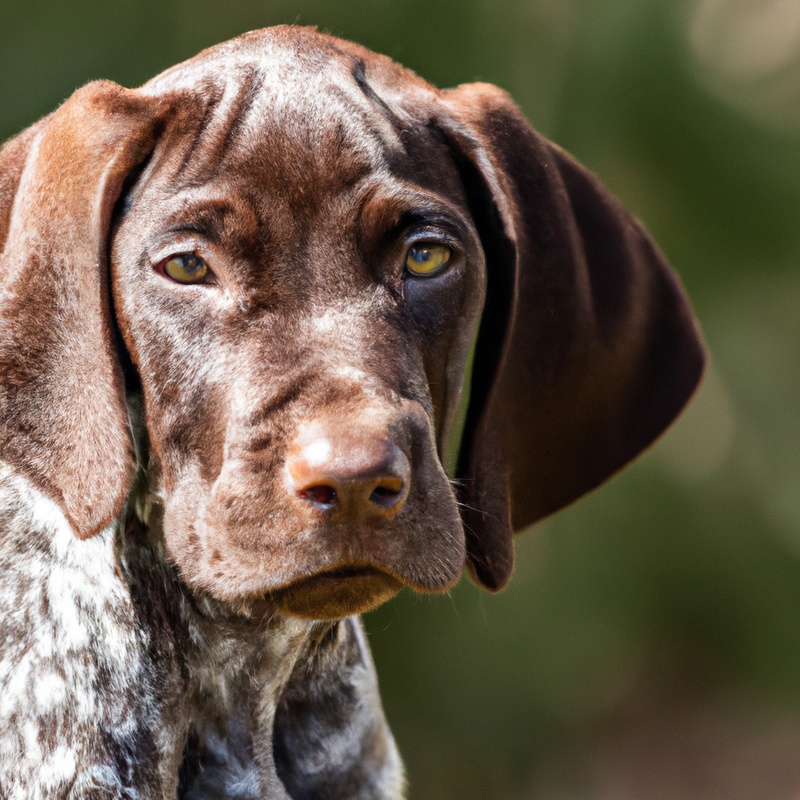
Introduction to water and swimming skills
First and foremost, introducing your German Shorthaired Pointer to water at a young age is crucial for developing their swimming skills. It’s important to make the experience positive and fun, so they associate the water with something enjoyable.
Start in shallow water and gradually progress to deeper areas as they become more comfortable.
One way to encourage swimming is by using toys or treats that float on the water. Toss them in and let your dog retrieve them, creating a positive association with the water.
You can also join them in the water and provide reassurance and support as they paddle around.
Remember to always monitor your dog’s comfort level and never force them into the water if they are anxious or scared. Patience and positive reinforcement are key in helping your German Shorthaired Pointer develop their water and swimming skills.
Building confidence on the dock
Building confidence on the dock is essential for training a German Shorthaired Pointer for dock diving. First, introduce your dog to the dock gradually, allowing them to explore and get comfortable with their surroundings.
Show them that the dock is a safe and fun place to be.
Use positive reinforcement, such as treats or praise, to reward your dog for any progress they make on the dock. Practice basic obedience commands on the dock to reinforce their training and build their confidence.
Over time, your German Shorthaired Pointer will become more confident and ready to take on the challenges of dock diving.
Techniques for improving jumping and retrieving
When it comes to improving jumping and retrieving skills in your German Shorthaired Pointer, there are a few techniques you can try.
- Start with basic obedience training: Teach your dog to follow commands like sit, stay, and come. This will establish a strong foundation for more advanced skills.
- Use positive reinforcement: Reward your dog with treats or praise when they successfully jump or retrieve. This will encourage them to continue practicing and improve their performance.
- Practice with obstacles: Set up hurdles or obstacles for your dog to jump over. Gradually increase the height or difficulty level as they become more experienced and confident.
- Gradually increase distances: Begin with short retrieves and gradually increase the distance. This will help your dog build endurance and improve their retrieving skills.
- Use retrieval toys: Introduce toys that are designed for retrieving, such as bumper or dummy, during training sessions. This will help your dog associate retrieving with fun and excitement.
Advanced training for competition
So, you’ve mastered the basics of training and now you’re ready to take your German Shorthaired Pointer to the next level for competition. Advanced training is key if you want your dog to excel in various competitive events.
Here are a few important points to consider:
- Fine-tune obedience: It’s crucial to reinforce obedience commands, such as sit, stay, and come, to ensure your dog’s responsiveness during intense competitions. Consistency and positive reinforcement will help your German Shorthaired Pointer quickly grasp these commands.
- Enhance physical strength and endurance: Competition requires your dog to be in top-notch physical condition. Regular exercise routines that incorporate strength-building exercises, agility drills, and endurance training will help your dog perform at their best.
- Sharpen specific skills: Identify the specific skills required in the competition you’re aiming for and focus on training your dog accordingly. Whether it’s retrieving, jumping, or navigating obstacles, repetitive practice in a controlled environment will help your German Shorthaired Pointer improve their techniques.
- Introduce distractions: In a competitive setting, there will be numerous distractions. It’s important to gradually expose your dog to distractions during training sessions to help them maintain focus and perform well under distracting circumstances.
- Seek guidance from professionals: Consider working with experienced trainers or joining a dog sports club to gain insights and valuable guidance. They can help you refine your training techniques and provide advice tailored to your dog’s needs.
Safety and Health Considerations
Preparing your German Shorthaired Pointer for dock diving
Preparing your German Shorthaired Pointer for dock diving doesn’t have to be complicated. Here are a few tips to get you started:
- Start with basic obedience training to establish a strong foundation. This will help your dog understand and follow your commands during dock diving training.
- Gradually introduce your dog to water and work on building their confidence around it. Start with shallow pools or calm lakes before moving on to deeper or more challenging water environments.
- Invest in a life jacket specifically designed for dogs. This will ensure their safety and provide additional buoyancy while practicing and competing in dock diving.
- Incorporate exercises that focus on building your dog’s strength and endurance, such as swimming sessions, running, and jumping exercises. This will help them develop the physical abilities needed for dock diving.
- Make training sessions fun and rewarding for your dog. Use positive reinforcement, such as treats, praise, and toys, to motivate and encourage them during training.
- Consider working with a professional dock diving trainer who can provide guidance, instruction, and expert advice tailored to your German Shorthaired Pointer.
Safety precautions during practices and competitions
Safety precautions during practices and competitions are essential to ensure the well-being of both the German Shorthaired Pointer and their handler. Here are some measures to keep in mind:
- Warm-up and cool-down: Start each training session or competition with a gentle warm-up to prevent injury. Likewise, end with a cool-down routine to allow the dog’s muscles to relax and recover.
- Adequate hydration: Make sure your German Shorthaired Pointer has access to fresh water throughout practices and competitions. Hydration is crucial for their overall well-being and optimal performance.
- Proper jumping technique: Teach your dog the correct mechanics of jumping to minimize the risk of injury. Consult a professional trainer who specializes in dock diving to ensure your dog is using the proper form.
- Surface evaluation: Before each practice or competitive jump, inspect the dock or pool area for any hazards that could cause harm. Remove obstacles, sharp objects, or slippery surfaces to minimize the risk of accidents.
- Use safety equipment: Consider using safety gear such as life jackets or buoyant collars, especially during early training stages. These aids help the dog stay afloat and make it easier for handlers to assist in case of any emergencies.
- Supervision and training: Always supervise your German Shorthaired Pointer during practices and competitions. Proper training and guidance are crucial to ensure their safety and to address any potential behavioral issues.
Common injuries in dock diving and prevention methods
Common injuries in dock diving can include sprains, strains, and fractures. Dogs can also suffer from injuries to their muscles, ligaments, or tendons from the high impact of landing in the water.
Additionally, dogs may experience back or neck injuries if they land improperly or collide with the dock.
To prevent injuries, it’s important to gradually increase your dog’s training and conditioning. Building strength and flexibility through exercises can help prevent strains and sprains.
Using a proper warm-up routine before each dive can also reduce the risk of injury.
Providing your dog with a well-fitted life vest or buoyancy aid is crucial for their safety in the water. This can help support their body and decrease the impact on their joints when landing.
Supervision and training from a certified instructor are essential to ensure that your dog is performing dives correctly and minimizing the risk of injury.
Regular veterinary check-ups are important to detect any underlying health issues that could increase the likelihood of injury. It’s also important to give your dog enough rest and recovery time between training sessions and competitions to prevent overexertion.
Health and fitness requirements for dock diving dogs
Health and fitness requirements for dock diving dogs are important to ensure their safety and performance. First and foremost, a dog should be in good overall health before participating in this activity.
Regular veterinary check-ups and vaccinations are crucial to prevent any potential health issues.
In terms of fitness, a dock diving dog needs to have strong muscles and good endurance. Regular exercise, such as running, swimming, and playing catch, can help build their stamina and strength.
Incorporating activities that improve core strength and coordination, like agility training, can also be beneficial.
Maintaining a healthy weight is essential for a dock diving dog. Excess weight can put strain on their joints and hinder their ability to jump and swim efficiently.
A balanced diet tailored to their specific nutritional needs, along with portion control, is important to prevent obesity.
Proper hydration is another crucial aspect. Dogs should have access to fresh water before, during, and after their dock diving sessions.
Adequate hydration supports their overall performance and helps regulate their body temperature.
Regular mental stimulation is also vital for their well-being. Engaging in interactive play and training sessions can keep their minds sharp and maintain their enthusiasm for dock diving.
Lastly, it is important to be aware of any breed-specific health concerns.
Some dog breeds may be more prone to certain conditions, such as hip dysplasia or heart problems. Consulting with a veterinarian can help identify and address any potential health risks specific to your dog’s breed.
By prioritizing the health and fitness requirements for dock diving dogs, you can help ensure that your furry friend enjoys this thrilling activity to the fullest while staying safe and healthy.
Participating in Dock Diving Competitions
Finding dock diving events and organizations
Finding dock diving events and organizations is an important step if you want to participate in this exciting sport with your German Shorthaired Pointer. Here are a few ways to find these events:
- Online searches: Start by conducting online searches using keywords like “dock diving events” or “dock diving organizations.” This will give you a list of events and organizations in your area or even nationally.
- Join dock diving communities: Social media platforms like Facebook and Instagram have dedicated groups and pages for dock diving enthusiasts. Joining these communities can keep you updated about upcoming events and connect you with other dock diving enthusiasts who can provide valuable information and recommendations.
- Local sporting goods stores: Check with local sporting goods stores or pet supply stores in your area. They may have notices or flyers about dock diving events or be able to provide information about local organizations.
- Contact national dock diving organizations: Reach out to national dock diving organizations such as North America Diving Dogs (NADD or United Kennel Club (UKC). These organizations often have event calendars and can assist you in finding local events or clubs.
Registration process and requirements
Registering for a dock diving competition is typically a simple process. First and foremost, you’ll need to find a competition near you that accepts registrations.
You can usually find this information on the competition’s website or by reaching out to the event organizers.
Once you’ve identified a competition, the next step is to fill out the registration form. This will typically include basic information such as your name, contact details, and the name and breed of your dog.
Some competitions may also require proof of vaccinations or health records for your dog, so be sure to have those ready.
After submitting your registration form, you will generally be required to pay a registration fee. This fee helps cover the costs of running the competition and providing awards and prizes.
The amount can vary depending on the competition, so make sure to check the registration details for specific pricing information.
It’s important to note that some competitions may have specific requirements or restrictions for participating. For example, there may be certain age or size restrictions for dogs, or certain levels of training or experience required.
Make sure to review the rules and regulations of the competition before registering to ensure that you and your dog meet all the necessary requirements.
By following these registration steps and meeting the requirements, you’ll be well on your way to participating in a dock diving competition with your German Shorthaired Pointer or any other dog breed you have. It’s a fun and thrilling event that can showcase the incredible athleticism and diving skills of your four-legged friend!
Competing in different dock diving categories
Competing in different dock diving categories is an exciting way to showcase your dog’s skills and athleticism. There are several categories to choose from, each with its own unique challenges and requirements.
First and foremost, you’ll want to familiarize yourself with the different categories available at the competition you’re participating in.
Here are some popular dock diving categories you might come across:
- Big Air: This is the most common category, where dogs leap off the dock to retrieve a toy thrown into the water. The distance they cover is measured, and the dog with the longest jump wins.
- Speed Retrieve: In this category, dogs are timed on how quickly they can swim to the end of the pool and retrieve a toy. It focuses on both speed and accuracy.
- Extreme Vertical: This category tests a dog’s ability to jump high. A toy is suspended above the water, and the dog must leap to grab it. The height of the jump is measured, and the highest jump wins.
- Iron Dog: For those seeking a challenge, the Iron Dog combines all three categories mentioned above. It tests a dog’s overall performance by combining their scores in Big Air, Speed Retrieve, and Extreme Vertical.
Each category has its own rules and regulations regarding equipment, timing, and scoring. It’s important to thoroughly understand the requirements of each category and train your German Shorthaired Pointer accordingly.
Good luck, and have fun competing in dock diving!
Tips for success in dock diving competitions
Alright, let’s dive into some tips for success in dock diving competitions! Here are a few things to keep in mind if you want to make a big splash:
- Training is key: Make sure your dog is properly trained in jumping off a dock and retrieving toys from the water. This will help them build confidence and improve their technique.
- Start small: If your dog is new to dock diving, begin by practicing in a shallow pool or a calm body of water. Gradually increase the height and distance as they become more comfortable and skilled.
- Get the right gear: Invest in a good quality dock diving vest to help your dog stay buoyant and safe during their jumps. Also, make sure to use toys that float and are easy for your dog to grab in the water.
- Stay focused: During the competition, keep your energy level high and maintain eye contact with your dog. Your enthusiasm and encouragement will boost their performance.
- Take breaks: Dock diving can be physically demanding, so remember to give your dog breaks between jumps to prevent fatigue and injuries. Hydration is also key, so keep some water handy.
- Practice, practice, practice: The more you practice together, the better you’ll become as a team. Find a local dock diving club or facility where you can train regularly and gain valuable experience.
Frequently Asked Questions (FAQs)
Can any dog breed participate in dock diving?
Absolutely! Any dog breed can participate in dock diving, as long as they are physically able to jump off a dock and swim. While some breeds may have a natural inclination for swimming and jumping, such as Labrador Retrievers or Belgian Malinois, any dog can get involved in this exciting sport.
It’s all about their willingness to have fun and their comfort level with water.
So whether you have a German Shorthaired Pointer or a Chihuahua, they can give dock diving a try and have a splashing good time!
Are German Shorthaired Pointers the best breed for dock diving?
German Shorthaired Pointers are indeed one of the best breeds for dock diving. Their athletic build and natural swimming ability make them excellent contenders in this sport.
Their love for water coupled with their incredible jumping and retrieving skills allows them to excel in dock diving competitions.
German Shorthaired Pointers are known for their high energy levels and eagerness to learn, making them an ideal breed to train for this activity. So if you’re looking for a dog to take on the dock diving challenges, a German Shorthaired Pointer could be a top choice.
What age should a German Shorthaired Pointer start dock diving training?
When it comes to dock diving training for German Shorthaired Pointers, timing is key. It’s important to start their training at the right age to ensure their safety and development.
First and foremost, make sure your pup is at least 6 months old before introducing them to dock diving activities.
This is when their joints and bones are more mature and less prone to injuries. Starting too early could result in long-term health issues.
So, be patient and give your furry friend the proper time to grow before diving into the exciting world of dock diving training.
Can a German Shorthaired Pointer participate in other dog sports?
Absolutely! German Shorthaired Pointers are versatile and athletic dogs, making them excellent candidates for various dog sports. They have the energy, agility, and intelligence needed to excel in activities like agility, obedience, flyball, tracking, and even canine disc.
These sports not only provide mental stimulation and physical exercise for your German Shorthaired Pointer but also create a stronger bond between you and your furry companion.
So go ahead and explore the exciting world of dog sports with your German Shorthaired Pointer!
Final Verdict
German Shorthaired Pointers possess the natural instincts and characteristics that make them excellent candidates for dock diving. With the right training and guidance, these athletic and water-loving dogs can become skilled competitors in this exciting sport.
By following a structured training program, prioritizing safety and health considerations, and participating in dock diving competitions, German Shorthaired Pointer owners can unlock their dog’s potential and experience the thrill of watching them soar through the air and make impressive retrieves.
Trust in the information presented here, backed by my expertise, and take the leap into the world of dock diving with your German Shorthaired Pointer. Your dog will thank you, and you’ll create lifelong memories of adventure and accomplishment together.

